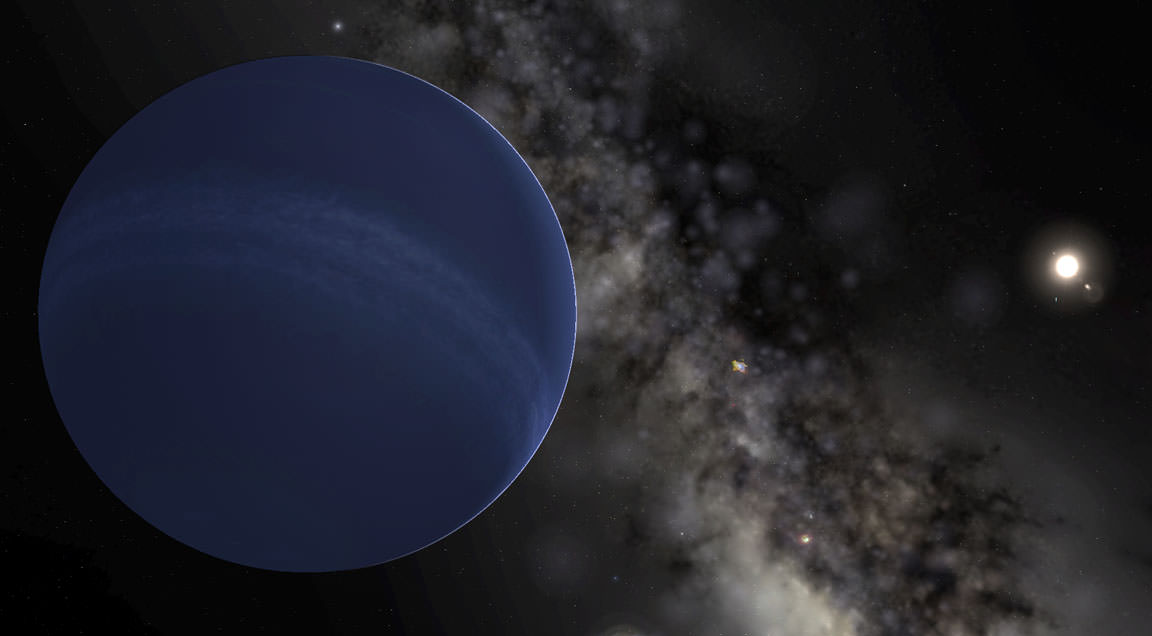
Whether you call it Planet Nine, Planet X, the Perturber, Jehoshaphat, “Phattie,” or any of the other proposed names—either serious or flippant—this scientific back and forth over its existence is getting exhausting.
Though it’s never been observed, there’s been evidence that there’s another planet out there.
That evidence is largely based on clustering of distant objects, way out in the reaches of our Solar System: Kuiper Belt Objects (KBO).
Some of those KBOs have some puzzling orbits.
Those orbits have been presented as evidence of an undiscovered large planet out there, unseen, yet shepherding these KBOs on their unusual orbits with its great mass.
She’s studied distant KBOs and Trans-Neptunian Objects (TNO) in an effort to understand the processess, and possible large planets, that shape the distant Solar System.
In a recent article at The Conversation, she outlined the current state of evidence regarding the existence of Planet Nine.
“…the Planet Nine theory does not hold up to detailed observations.”.
This Planet Nine business started around 2016, when astronomers Mike Brown and Konstantin Batygin hypothesized the existence of Planet 9.
They discovered the aforementioned KBOs with those strange, tilted, elliptical orbits.
Now Lawler, who has studied the distant Solar System and its resident objects, says it’s time to put Planet Nine to bed.
“The discoveries from the most successful Kuiper Belt survey to date, the Outer Solar System Origins Survey (OSSOS), suggest a sneakier explanation for the orbits we see,” she writes.
“Neptune’s migration explains the pervasiveness of highly elliptical orbits in the Kuiper Belt, and can explain all the KBO orbits we’ve observed,” she wrote, except for a handful.
“Finding several extreme KBOs on orbits pointed in the same direction was a hint that something was going on,” she writes.
She points out that two separate groups of researchers presented studies pointing to the existence of the orbit-shaping Planet Nine.
That doubled the number of KBOs with known orbits.
And since they follow highly elliptical orbits, they spend most of their time a great distance from the Sun, adding to the observational challenge.
Herein lies the observational bias that Lawler says is clouding our understanding of the distant Solar System.
She writes: “This means that the KBOs on elliptical orbits are particularly hard to discover, especially the extreme ones that always stay relatively far from the sun.
And Lawler drives the point home even more clearly, explaining that “This leads to another observation bias that has historically been ignored by many KBO surveys: KBOs in each part of the solar system can only be discovered at certain times of year.
“Many beautiful and surprising objects remain to be discovered in the mysterious outer solar system, but I don’t believe that Planet Nine is one of them.”.
Lawler says that their discovery of additional extremely distant KBOs with a uniform distribution shows that there really isn’t a clumping?
Those simulations showed that “if observations are made only in one season from one telescope, extreme KBOs will naturally only be discovered in one quadrant of the solar system,” Lawler wrote.
Lawler says that all of the new observational evidence simply doesn’t add up to Planet Nine.
“Many beautiful and surprising objects remain to be discovered in the mysterious outer solar system, but I don’t believe that Planet Nine is one of them,” Lawler concludes!
